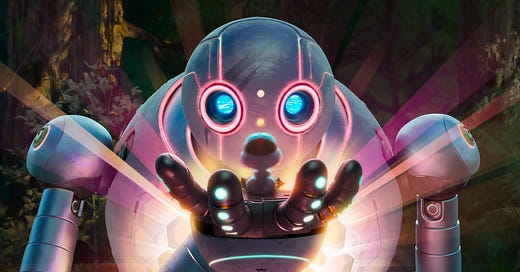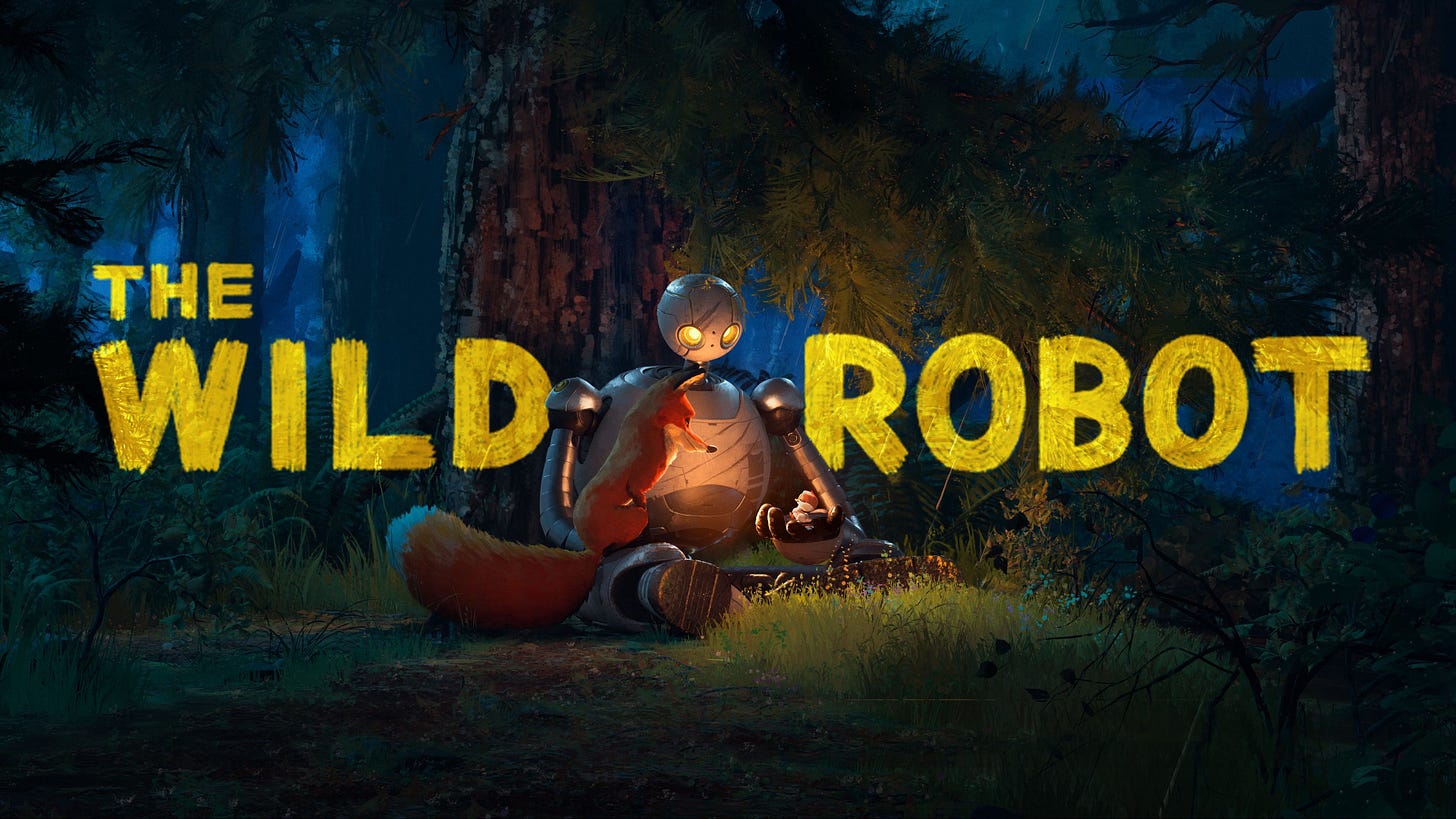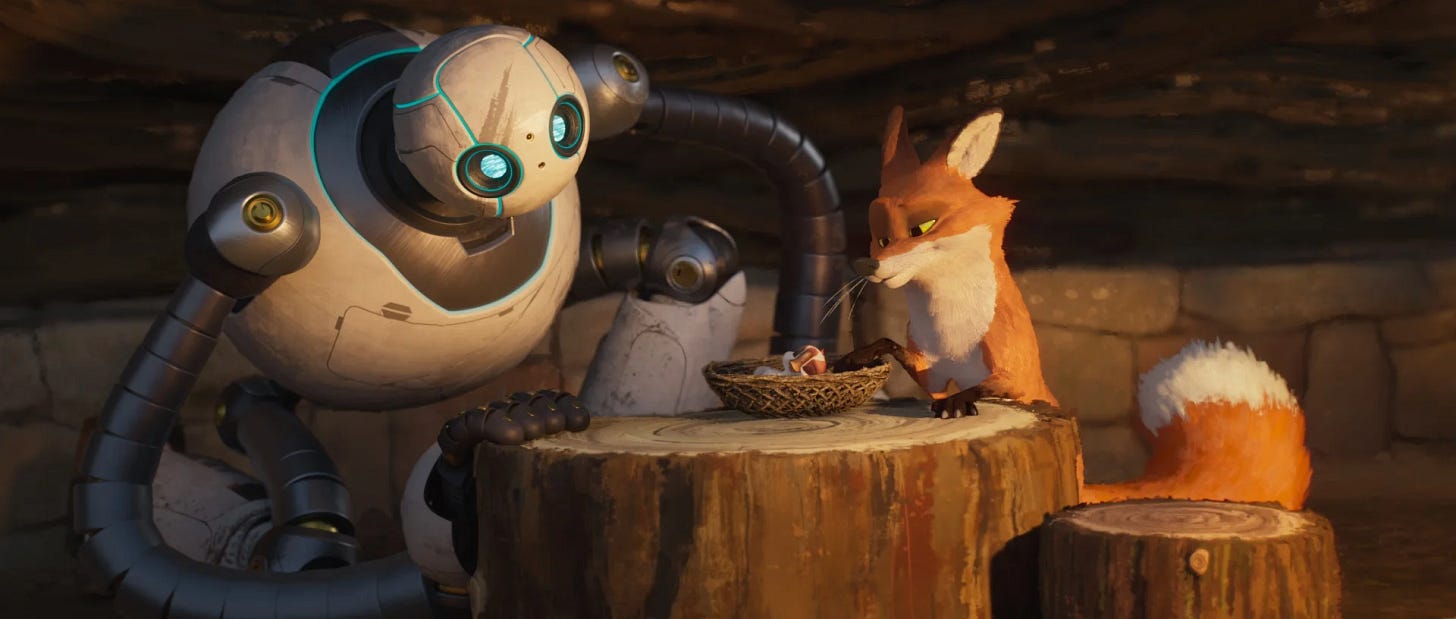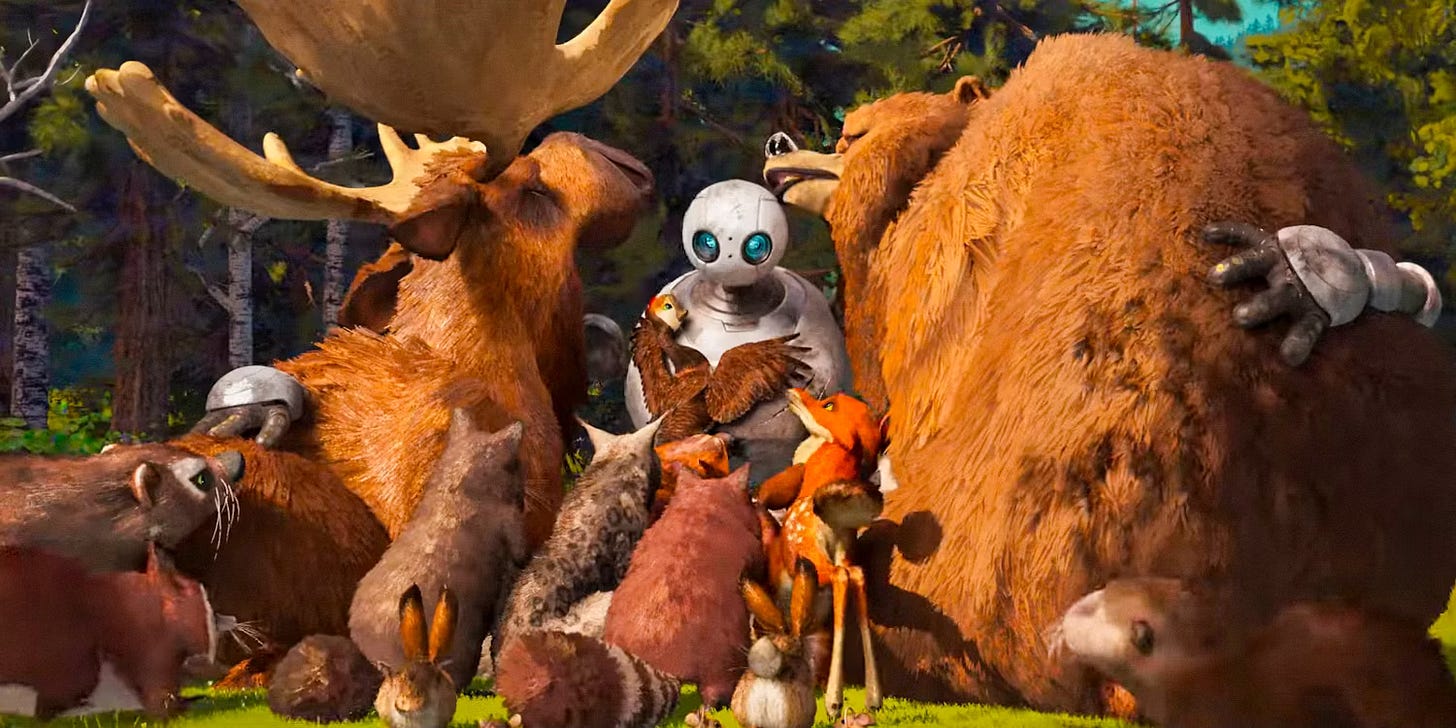I moved to a new city earlier this week, which means that when I went to the cinema yesterday afternoon, it was a first for me. And I don’t want to say that I put any pressure on yesterday’s cinema outing because of that, but I also kind of did. Even if in two or five or ten years I won’t even remember what my first cinema trip here was, I don’t think I would have liked the notion of it being a one or a two star film. I knew, however, that The Wild Robot was received very positively after its world premiere at TIFF nearly a month ago and since I haven’t seen it at the festival knowing it would be getting a theatrical release very shortly, it seemed like a safe pick, a film that had very little chance to disappoint.
Based on a book series by Peter Brown, The Wild Robot is the latest attempt from DreamWorks to revive its glory days. I think it can be universally acknowledged that DreamWorks peaked in the mid-2000s with the likes of Shrek and Madagascar but even their less popular, non-franchised films from that time were strong. I’m particularly thinking about Over the Hedge and Flushed Away. Admittedly, I haven’t seen either in eighteen years but 7 year old me loved them and I can’t help but trust her taste. More recently, however, DreamWorks really seemed to have lost its momentum. Other than sequels to popular franchises like the recent Kung Fu Panda instalment, they really fell off with no recognizable original titles. The Wild Robot comes as their saving grace and based on early box-office numbers and the reception, I can only assume it successfully achieved what it set out to do, a feat that’s even more impressive knowing the film is not a part of a large, well-known IP and is – despite being based on a book series – new to the vast majority of audiences.
The Wild Robot opens with a robot getting washed up on an island after a typhoon in a future when humans have built floating cities, powered by a tech company named Universal Dynamics. The robot, Rozzum Unit 7134 (Lupita Nyong'o) or “Roz,” programmed to serve humans, attempts to advertise her services to the animals on the island but ends up with a reputation of “the monster” as a result of her inability to communicate with them in a shared language. She spends days learning their language but even after successfully acquiring it, still can’t find anyone in need of help. One thing leads to another and Roz ends up with an orphan baby goose in her care. When it hatches, the gosling (Kit Connor) believes Roz to be his mother and so their adventures, accompanied by a mischievous fox by the name of Fink (Pedro Pascal) who originally attempted to steal the egg from Roz, begin.
The opening part of the film is all you’d imagine an animated children’s film to be. It is comedy and adventure at their best, Roz trying to survive in an unfamiliar environment while encountering peculiar characters who inhabit the island. There is some dark comedy in there as well, limited by the fact this is a children’s film after all, referencing the food chain and the realities of living in the wilderness. The film acknowledges the harsh parameters of wild life but then unravels into a story of kindness and found family.
After an entertaining first act, the film starts building out its emotional components. Roz starts to bond with Brightbill, the gosling, and develops a friendship with Fink as the two attempt to teach Brightbill the skills he needs for survival. The three form a little family, Roz and Fink serving as de facto adoptive parents to Brightbill but they remain isolated from and antagonised by the other animals on the island. They may be outsiders on the island but they each offer something for audiences to relate to. Roz’s character and her hesitancy and fears around parenting will undoubtedly appeal to parents watching. Children will likely relate to Brightbill and find comfort in his quest to be true to himself, perhaps an unoriginal character arc but one that is done masterfully in The Wild Robot. A universally likeable character, Fink is a loner with a dark sense of humour and a standoffish personality but ultimately reveals himself to have a heart of gold as he fits himself into this loving, adopted family. By the end of the film, the audiences can’t help but root for them, and the ultimate payoff is heartfelt and earnest, painting a picture of acceptance, confidence, and found family.
Beyond the wonderful story, The Wild Robot brings stunning visuals and a whimsical animation style that is sure to delight the viewers just as much as the characters will. Relatively standard CGI elements are used to make out the shapes but the surfaces – of both characters and their environments – have a hand-painted look which will undoubtedly enthral audiences, both young and old.
While the film takes on many different thematic elements – acceptance, found family, motherhood, environmentalism, the challenges of growing up – at its core, it deals with kindness and community, showing how we need to work together to create nurturing environments that will benefit community members beyond just ourselves in a way that will allow us to ultimate blossom into the best versions of ourselves as individuals as well. Some of its themes are surely too complex for children but that is precisely what makes the film as good as it is. It gives it timelessness. The seven year olds watching the film today will be able to watch it again, ten or twenty years down the line, and marvel at new details and messages that they failed to make sense of now.
The layers are what make The Wild Robot what it is, easily the best animated film of the year and potentially beyond. It is a superbly crafted tear-jerker and a story that will remain with you long after you leave the cinema.








i'm so excited to watch it! i'm nervous it will destroy me....but genuinely so excited